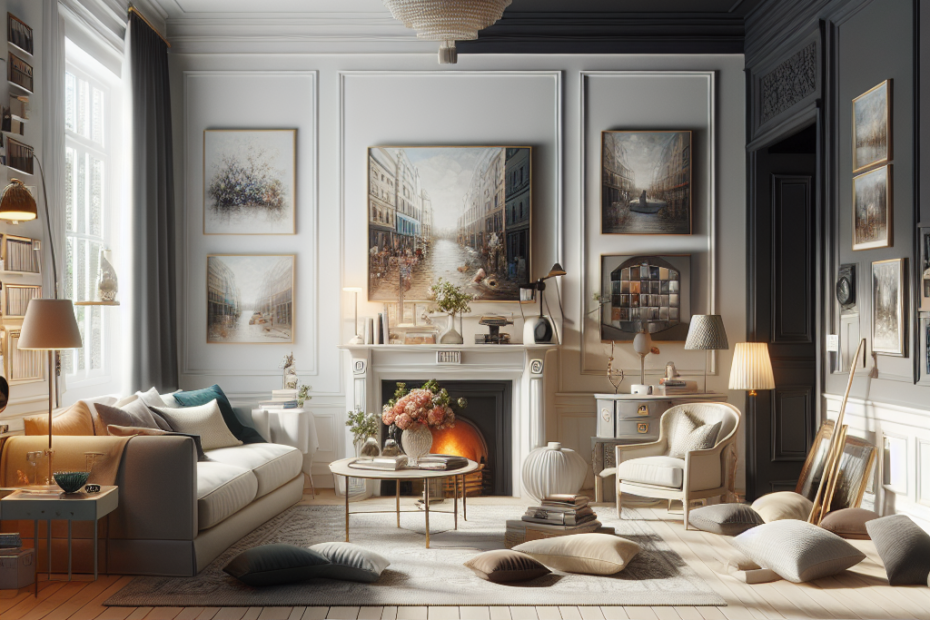Designers and artists often seek effective and visually appealing ways to enhance their work. One such method they can use is the monochromatic color scheme. This approach involves variations of a single hue, creating harmony, unity, and a soothing effect. This blog delves into what a monochromatic color scheme is, its benefits, and how one can successfully implement it in their designs.
Understanding a Monochromatic Color Scheme
A monochromatic color scheme uses different shades, tones, and tints of a single color. For example, they could use variations of blue such as sky blue, navy blue, and baby blue in one design. This method limits chaos and creates a cohesive and polished look.
Elements of a Monochromatic Color Scheme
When utilizing a monochromatic color scheme, designers focus on four main components:
- Base Color: The primary hue from which variations are derived.
- Shades: Mixing the base color with black to reduce lightness.
- Tints: Mixing the base color with white to increase lightness.
- Tones: Mixing the base color with gray to create a more subdued effect.
Benefits of Using a Monochromatic Color Scheme
Using a monochromatic color scheme offers several benefits which include:
- Simplicity: With fewer colors, it’s easier and faster to design, reducing decision fatigue.
- Elegance: A unified color palette adds sophistication and a sense of harmony.
- Focus: By reducing visual noise, it allows the primary content or subject to stand out more.
- Versatility: It fits various design types, whether for websites, interiors, or graphic arts.
Steps to Create a Monochromatic Color Scheme
To create a monochromatic color scheme, designers can follow these key steps:
1. Choose a Base Color
Selecting the right base color is critical as it sets the tone for the entire design. Consider the psychological impact of colors; for instance, blue often conveys calmness, while red can embody energy and passion.
2. Create Variations (Shades, Tints, and Tones)
Utilize tools like color pickers to generate different shades, tints, and tones. This provides the needed diversity while maintaining the harmony inherent in a monochromatic scheme.
3. Implement and Test
Apply these variations across the design elements such as backgrounds, text, and accents. It’s essential to test the visual impact to ensure it meets the design goals.
| Step | Description |
|---|---|
| Choose a Base Color | Select a primary hue considering its psychological impact. |
| Create Variations | Generate different shades, tints, and tones. |
| Implement and Test | Apply and test variations across design elements. |
Common Mistakes to Avoid
Although a monochromatic color scheme is straightforward, some common mistakes can ruin its effectiveness:
- Overuse of Dark Shades: Too many dark shades can make the design look heavy and gloomy. Balancing with lighter tones is vital.
- Lack of Contrast: While maintaining harmony, sufficient contrast is necessary to avoid a monotonous look.
- Ignoring User Preference: Consider the target audience’s preferences and cultural context in color choices.
Statistics on Monochromatic Color Schemes
A study by the Institute for Color Research reveals that people make a subconscious judgment about a product within 90 seconds of initial viewing, and 62%-90% of the judgment is based on color alone (Color Matters).
Examples of Monochromatic Color Schemes
Examining real-world examples can provide inspiration and insights:
- Web Design: Minimalist websites often use monochromatic schemes to draw attention to content and functionality.
- Interior Design: Rooms with variations of a single color can look both spacious and cohesive.
- Fashion: Monochromatic outfits are a chic way to look put-together and stylish.
Best Tools for Creating a Monochromatic Color Scheme
Several tools can assist designers in creating effective monochromatic color schemes:
- Adobe Color: A web-based tool for creating and saving color palettes.
- Coolors: Enables users to generate and explore various color combinations.
- Paletton: Offers an intuitive interface for creating and adjusting color schemes.
Key Takeaways
- A monochromatic color scheme uses variations of a single hue.
- Benefits include simplicity, elegance, focus, and versatility.
- Key steps involve choosing a base color, creating variations, and testing.
- Avoid common mistakes like overusing dark shades and lacking contrast.
- Use tools like Adobe Color, Coolors, and Paletton to create effective schemes.
FAQ
1. What is a monochromatic color scheme?
A monochromatic color scheme uses different shades, tones, and tints of a single color.
2. What are the benefits of using a monochromatic color scheme?
It offers simplicity, elegance, focus, and versatility, making a design cohesive and visually appealing.
3. How do you create a monochromatic color scheme?
Choose a base color, create its various shades, tints, and tones, and test them across design elements.
4. What are some common mistakes to avoid?
Avoid overusing dark shades, lacking contrast, and ignoring user preferences.
5. What tools can help in creating a monochromatic color scheme?
Tools like Adobe Color, Coolors, and Paletton can assist in generating and adjusting color schemes.
